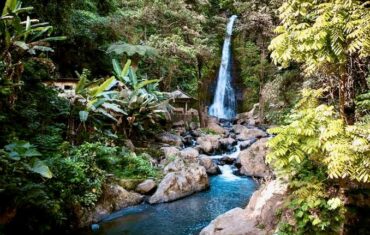The Best Time to Visit Bali
Bali is a tropical paradise, a destination that promises sun, surf, and spiritual awakening. But with two distinct seasons and a calendar full of events, when is the best time to visit Bali? The answer isn’t a simple one. It depends on what you want to experience, from sun-soaked beaches to lush green rice paddies, and from bustling cultural festivals to peaceful, quiet retreats.
This comprehensive guide breaks down the best time to visit Bali based on your travel style, budget, and desired activities. We’ll explore the two main seasons, highlight the pros and cons of each month, and help you plan your ideal Balinese escape.

The Quick Answer: When is the Overall Best Time to Go to Bali?
For the best balance of great weather, manageable crowds, and reasonable prices, the shoulder seasons of May, June, September, and October are often considered the ideal time to visit Bali. During these months, you’ll experience the beautiful, sunny days of the dry season without the peak-season crowds and prices of July and August.
Bali’s Two Distinct Seasons: Dry vs. Wet
Understanding Bali’s climate is the first step to planning your trip. The island has a tropical climate with consistent temperatures year-round, but the amount of rainfall and humidity varies dramatically.
The Dry Season (May to October)
The dry season is Bali’s most popular and busiest time of year. With consistent clear skies, low humidity, and pleasant temperatures, it’s the perfect time for a classic beach holiday.
Pros:
- Ideal Weather: Expect abundant sunshine and minimal rainfall. This is the best time for beach lounging, outdoor activities, and enjoying stunning sunsets.
- Outdoor Activities: The clear skies and calmer seas are perfect for surfing on the west coast (like Uluwatu and Canggu), diving, snorkeling, and also hiking.
- Major Festivals: This season hosts popular events like the Bali Arts Festival and the Bali Kite Festival.
Cons:
- Peak Crowds: Particularly in July and August, the island can be very crowded with tourists from around the world.
- Higher Prices: Flights and accommodation are at their most expensive during the peak months.
- Dry Landscape: While great for the beach, the central and northern parts of the island may be less lush and green compared to the wet season.
The Wet Season (November to April)
The wet season, also known as the rainy season, brings higher humidity and frequent, though often short, tropical downpours.
Pros:
- Lush, Green Landscapes: The rain transforms the rice paddies and jungles into vibrant, deep green landscapes.
- Fewer Crowds: Outside of the Christmas and New Year’s holidays, you’ll find fewer tourists, a more relaxed atmosphere, and easier access to popular sites.
- Lower Prices: Accommodation and flight deals are more readily available, making it a budget-friendly option.
- Great for Wellness: The humid air and quieter environment are perfect for yoga, meditation, and spa treatments. The rain often falls in the afternoon, leaving the mornings clear for activities.
Cons:
- Heavy Rainfall and Humidity: Expect daily showers, which can sometimes last for a few hours or more. The high humidity can also be uncomfortable for some travelers.
- Potential for Flooding: Some low-lying areas may experience temporary flooding.
- Ocean Debris: In coastal areas, especially on the west coast, rainfall can wash rubbish from the mainland into the ocean.
Bali by the Month: A Detailed Breakdown
Let’s dive deeper into what to expect each month, so you can perfectly time your trip.
- January – February: The peak of the wet season. Expect the most rainfall and high humidity. It’s a great time for visiting temples, taking cooking classes, and enjoying the vibrant, green scenery.
- March – April: The transition from wet to dry season. Rain becomes less frequent and the weather begins to clear up. This is also a fantastic “shoulder season” for budget-conscious travelers who want good weather without the high-season price tag. April is a great month for surfing on the eastern coast.
- May – June: The beginning of the dry season and a perfect sweet spot. The weather is fantastic, the humidity is lower, and the crowds are still manageable before the summer rush. It’s a great time for diving and snorkeling.
- July – August: The absolute peak of the dry season. Expect perfect, sunny days, but also massive crowds and the highest prices of the year. Book well in advance if you plan to travel during these months.
- September – October: Another prime “shoulder season.” The weather remains excellent and the crowds begin to thin out. This is arguably the best time for surfing on the famous west coast breaks like Uluwatu. The island is less hectic and offers a great balance of sun and serenity.
- November – December: The transition from dry to wet season. While rainfall increases, it’s often in short bursts. The island is less crowded leading up to the holiday season, and you can find good deals. The period from mid-December to early January is another high-traffic time due to Christmas and New Year’s celebrations.
Planning Your Trip Based on Your Interest
Beyond just the weather, consider your personal interests.
- For Surfing: The dry season (April to October) is generally considered the best time for surfing, especially on the west coast, where offshore winds create perfect barrels. The wet season offers smaller, more forgiving waves on the east coast, which is ideal for beginners.
- For Yoga & Wellness: Both seasons have their perks. The dry season offers a high-energy, vibrant atmosphere for training and networking. The wet season, with its lush, quiet landscape, is perfect for a more introspective and peaceful retreat.
- For Diving & Snorkeling: The dry season (May to September) provides the best visibility and calmest seas, making it the top choice for exploring Bali’s underwater world.
- For a Budget Trip: Aim for the wet season (November to April), excluding the busy Christmas and New Year’s period. You’ll find the best deals on flights and also accommodation.
The Best Time to Visit Bali: Making the Right Choice for You
At Last, there is no single “best” time to visit Bali. The island offers a unique experience in every season. Whether you’re chasing the perfect wave, seeking a spiritual escape, or simply want to relax on a sun-drenched beach, Bali has something for everyone, all year long. By choosing the right time for your travel goals, you can guarantee a trip to this enchanting island that you’ll never forget. Chat with us on WhatsApp for more information.
In additionally, please check on our services:









